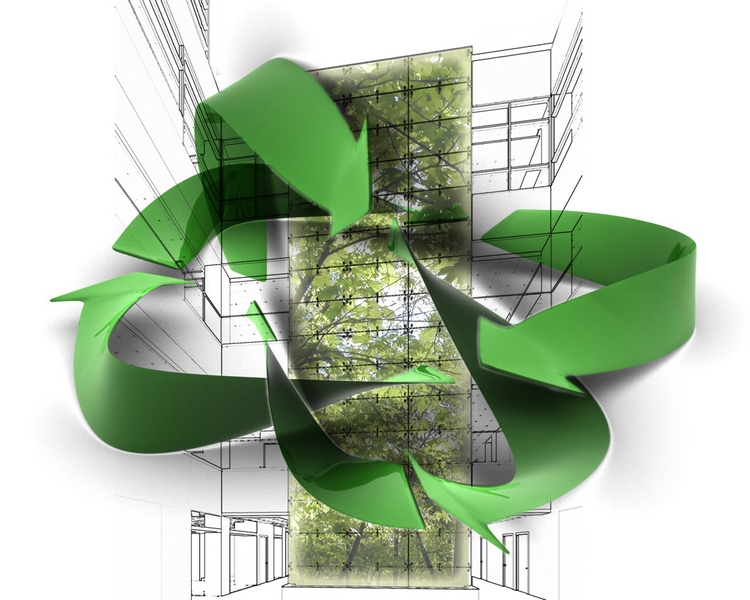Subscribe Now
Bundling Lean + Green Design to Improve Healthcare Outcomes
By Craig Pickerel
 With more projects incorporating sustainable features, and other projects utilizing lean principles during design and construction, one may wonder if these two practices can be more integrated and thought of as one. Is there a way to streamline sustainability through the introduction of lean design to make buildings and working environments even more efficient? By bundling lean and green design together, healthcare facilities may have the ability to produce highly effective and measurable outcomes resulting in greater building efficiency, staff satisfaction, return on investment and overall patient care.
With more projects incorporating sustainable features, and other projects utilizing lean principles during design and construction, one may wonder if these two practices can be more integrated and thought of as one. Is there a way to streamline sustainability through the introduction of lean design to make buildings and working environments even more efficient? By bundling lean and green design together, healthcare facilities may have the ability to produce highly effective and measurable outcomes resulting in greater building efficiency, staff satisfaction, return on investment and overall patient care.
With continuous pressure to provide safe, quality patient care at a lower cost; building design, layout and use of space become more critical. Efficiency and quality have become integral elements of healthcare facilities, and by combining lean design with sustainable design, the healthcare provider can greatly improve the patient and staff experience, as well as the environment and facility operations.
One of the key activities in utilizing lean techniques is to identify which steps add value to the process and which do not. Through lean manufacturing, seven types of wastes are typically identified.
These wastes include:
• Overproduction
• Unnecessary transportation
• Inventory
• Motion
• Defects
• Over-processing
• Waiting
As other industries take note, lean techniques are becoming more common. Healthcare leaders are exploring incorporating lean as a means to achieve goals of improving care. By looking at ways to improve the design of buildings and streamline processes, healthcare operations can become more efficient while eliminating waste.
Lean and green
Lean concepts, in many ways, parallel sustainable practices. For instance, using efficient mechanical equipment helps improve building performance and reduce energy use. Companies generally introduce lean principles to enhance profits and become more competitive. Sustainable features are often utilized to reduce environmental impact, as well as to receive a return on investment, provide a better working environment, increase consumer awareness and enhance the company’s image. Because lean and green become a natural pairing, more healthcare organizations are incorporating these practices to better patient outcomes.
Through the elimination of project wastes and the incorporation of sustainable features, the design of a building can encourage an environment of continuous improvement.
Efficiency and cost reduction becomes the mantra, which translates into doing more with less — with more focus on the patient. By focusing on the patient to streamline the care provided through lean principles, healthcare facilities in turn offer a healthier and more sustainable environment. Through a healthier and more efficient facility, patients have the opportunity to receive better care and recover quicker, while the healthcare organization reduces errors and hospital-acquired infections, and increases staff satisfaction and revenue by having a greater patient turnaround time.
Leading healthcare systems understand that to provide the highest quality of care, they have to develop buildings that reveal the economic, social and environmental benefits of high-performance green design. By bundling lean and green design together, the proper tools and processes are incorporated to maximize the healing environment and create a world-class treatment facility.
Craig Pickerel, AIA, NCARB, LEED AP, EDAC, is a lead project architect at SSOE Group and is focused on delivering efficient healing environments for a variety of healthcare facility types. He is a leader in the implementation of evidence-based design concepts – with an emphasis on patient focused care, lean principals and sustainable design. Pickerel can be reached at 419-255-3830 or cpickerel@ssoe.com.
Tags:
Posted June 15, 2011
More Articles:
- Coverings 2024
Apr 22, 2024 – Apr 25, 2024 - Hospital, Outpatient Facilities & Medical Office Buildings Summit
Apr 25, 2024 – Apr 25, 2024 - CxA Workshop & Exam
Apr 29, 2024 – Apr 30, 2024 - EMP Seminar & Exam at CxEnergy 2024
Apr 29, 2024 – Apr 30, 2024 - CxEnergy
Apr 29, 2024 – May 2, 2024 - PHCC West 2024
Apr 29, 2024 – May 2, 2024 - Lean in Design Forum 2024
May 1, 2024 – May 2, 2024










